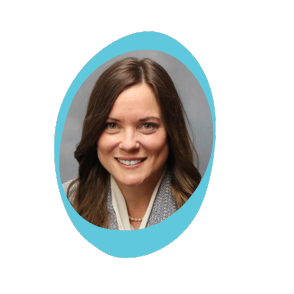Telehealth services and models have expanded rapidly during the pandemic. Healthcare employee burnout, the Great Resignation, and other factors are expected to further accelerate telehealth growth.
Telehealth expansion has led to significant growth in the use of interstate licensure compacts. As more healthcare professionals obtain licensure under compacts, compliance officers need to be aware of interstate licensure requirements – and their effects on patient care.
Increasing use of interstate licensure compacts
The National Council of State Boards of Nursing (NCSBN) recently published its annual report on interstate licensure. It noted 43 states and territories have enacted licensure compacts for nurses, physicians, physical therapists, emergency medical technicians, psychologists, speech therapists/audiologists, occupational therapists, and counselors.
The Nurse Licensure Compact (NLC) is an interstate agreement allowing nurses to practice in multiple states with one multistate license issued from their home state. The compact enables nurses to provide nursing services to patients located in other NLC states via telehealth without obtaining additional licenses. The NCSBN says this approach allows for greater nurse mobility, public protection, and access to care.
In addition, use of the Interstate Medical Licensure Compact (IMLC) grew by 47% in the past two years. The IMLC Commission noted “more than 8,000 licenses were issued through the compact from March 2020 to March 2021.” This is compared with nearly 4,000 licenses issued during the previous 12-month period.
With more healthcare professionals practicing across state lines, patients have more choices. And healthcare compliance officers have processes and procedures to update.
Interstate licensure compacts benefit patients
For patients, one benefit of licensure compacts includes licensing boards being able to ensure that physicians maintain professional integrity and medical standards – regardless of where they practice. As more healthcare professionals obtain licensure under compacts, patients gain greater flexibility in making care decisions.
For example, rural patients can participate in a telehealth visit with a specialist or provider at home. This saves patients the time and expense of driving long distances to see the same provider in a facility setting.
Another positive is the increased use of remote monitoring devices, such as glucose monitors, blood pressure monitors, and heart monitors. Patients can receive state-of-the-art monitoring remotely, instead of as a hospital inpatient. In turn, healthcare costs decrease and patient compliance increases.
A significant patient benefit with expanded telehealth is the inclusion of mental health services. Under the provisions of the Consolidated Appropriations Act of 2021, services for the diagnosis, evaluation, or treatment of mental health disorders may continue as telehealth services. Per the Centers for Medicaid & Medicare Services (CMS), the previous restrictions limiting telehealth mental health services to patients residing in rural areas no longer apply.
Compliance considerations
Compliance officers need to help their organizations keep up as healthcare delivery models change. Organizations will need to update everything from billing codes to human resources policies and procedures to information technology (IT) practices.
For example, compliance officers should partner with Human Resources to make sure out-of-state licensed professionals have been educated in facility policies and procedures. They also need to ensure that professionals working under licensure compacts understand the nuances of the rules and laws in the state they are working.
Compliance officers also need to work with the IT department to ensure that remote devices have been securely connected to the network. They also need to collaborate with the risk department on making sure proper medical professional liability insurance coverage has been obtained for these licensed professionals.
Compliance officers should work with Revenue Cycle on two crucial issues:
- Ensuring that the organization stays abreast of the changes to the CMS list of services payable under the Medicare Physician Fee Schedule when furnished via telehealth.
- Staying current on telehealth visit coverages and coding modifiers to decrease denials of patient charges.
As your team manages your response to continuing regulatory changes, having a system to keep up with the moving parts can help. YouCompli can support your regulatory change management process. It provides regulatory analysis to help you know what changes are coming and decide whether they affect your institution. It also provides requirements, tasks, and deadlines, in clear business English, making it easier for you to manage changes and verify that you’ve taken the proper steps.
Denise Atwood, RN, JD, CPHRM
District Medical Group (DMG), Inc., Chief Risk Officer and Denise Atwood, PLLC
Disclaimer: The opinions expressed in this article or blog are the author’s and do not represent the opinions of DMG.

Denise Atwood, RN, JD, CPHRM has over 30 years of healthcare experience in compliance, risk management, quality, and clinical areas. She is also a published author and educator on risk, compliance, medical-legal and ethics issues. She is currently the Chief Risk Officer and Associate General Counsel at a nonprofit, multispecialty provider group in Phoenix, Arizona and Vice President of the company’s self-insurance captive.
Get more healthcare regulatory change management right to your email!
How is your healthcare organization keeping up with changes in regulations? Read more about our regulatory monitoring process or schedule a demo.







